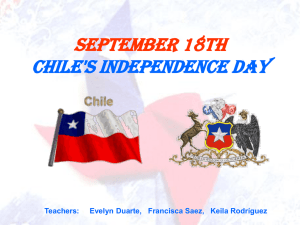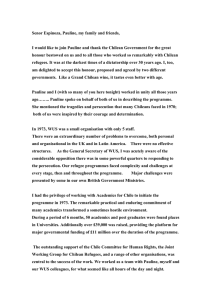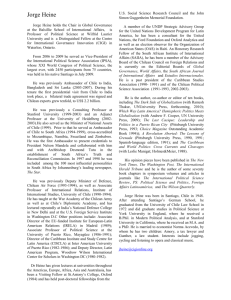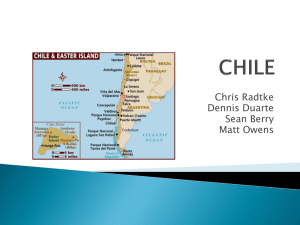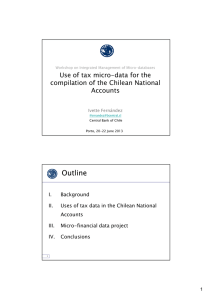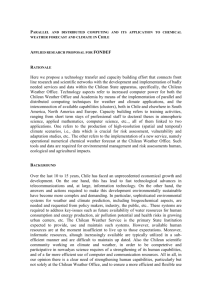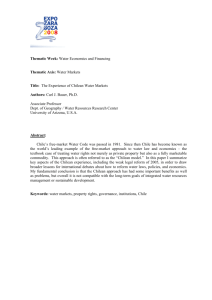R dieciocho
advertisement
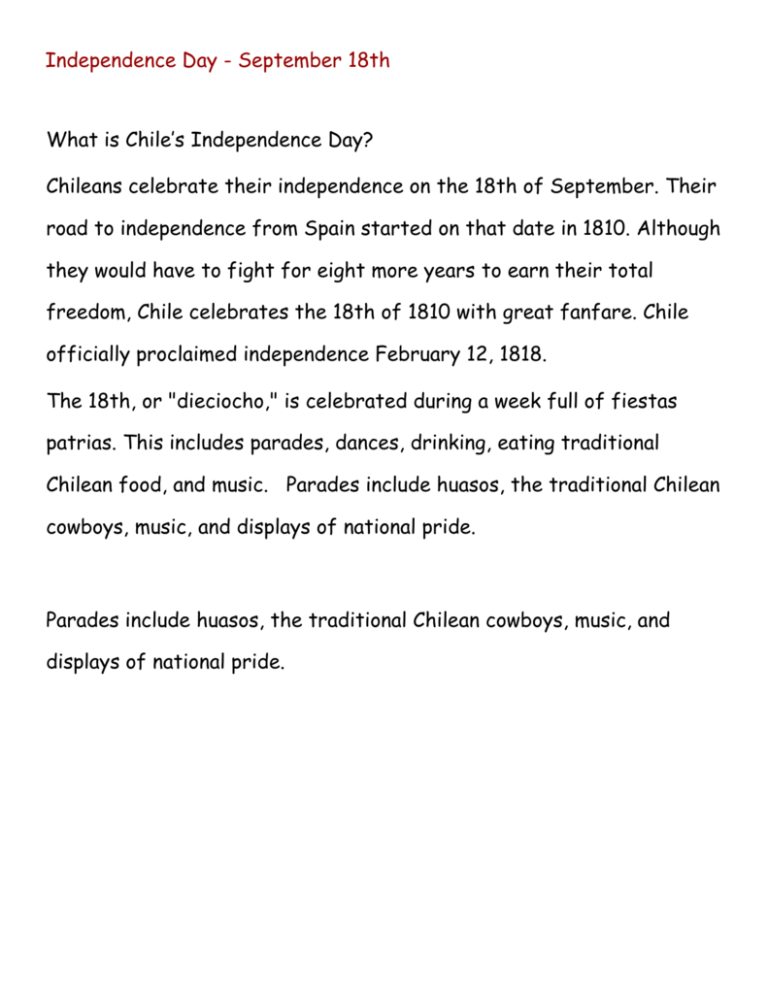
Independence Day - September 18th What is Chile’s Independence Day? Chileans celebrate their independence on the 18th of September. Their road to independence from Spain started on that date in 1810. Although they would have to fight for eight more years to earn their total freedom, Chile celebrates the 18th of 1810 with great fanfare. Chile officially proclaimed independence February 12, 1818. The 18th, or "dieciocho," is celebrated during a week full of fiestas patrias. This includes parades, dances, drinking, eating traditional Chilean food, and music. Parades include huasos, the traditional Chilean cowboys, music, and displays of national pride. Parades include huasos, the traditional Chilean cowboys, music, and displays of national pride. Where do they celebrate dieciocho? Much of the celebrations occur in ramadas (see picture below), temporary open buildings with thatched roofs traditionally made from tree branches. Ramadas feature a dance floor, music, and tables to eat. Fondas, or refreshment stands, offer a wide variety of Chilean foods including empanadas, anticuchos (shish kabobs), and more. During this week, you’ll find ramadas and fondas appearing throughout the country. Fondas are often found in open, outdoor areas that could be compared to fairgrounds or carnivals set apart for partying during the independence day celebrations. Ramada literally translates to a tree branch. As you can see in the following picture, temporary structures are made with roofs of tree branches covering a dance floor or tables for eating. The ramadas and fondas are decorated with Chilean flags everywhere: table covers, streamers, banners, etc. The fondas include refreshment and food stands where you’ll find traditional Chilean foods and the typical staples of the fiestas patrias: antichuchos, empanadas, and chicha. These areas typically fill up with people during the evenings of the week of September 18th and are an annual tradition. What is the food in Chile like? Breakfast The first meal of the day is small and usually consists of bread with assorted toppings and coffee or tea. Bread is bought fresh daily usually from a corner bakery, shop, or even a bread salesman that travels around the neighborhood. Chileans will top their bread with jelly or a delicious caramel-like topping called manjar. Lunch The largest meal of the day is usually lunch. This will consist of traditional Chilean dishes like cazuela (a stew), pastel de choclo (similar to shepard pie), or a wide variety of bean dishes. In rural areas, the lunch hour usually means businesses will close. Although this is traditionally for taking a siesta, I don't think the majority of people actually sleep during this time. Once (pronounced own-say) "Once" is a light meal that is eaten between 4 and 7 in the afternoon. Often times this is a repeat of breakfast; with bread and sandwich toppings with some tea or coffee. Dinner Dinner comes in the late evening and will be the size of lunch with traditional Chilean food. If most in the household work all day, dinner for them will be the largest meal. Food is an important piece of daily life in Chile. What type of dance do they do? There are also frequent dance competitions with the national dance, la cueca, being the most popular. The cueca is traditionally danced by a male and a female. There are specific steps (sliding and stamping) and movements in circles and semicircles. These movements change according to the three parts of the sung cueca, so the dancers’ steps have to coincide with each section of the song. The man and woman can join arms and talk in the preliminary promenade before the singing begins, as well as when the singers have finished. However, during the dance, they can’t speak, touch each other, or take their eyes off each other, except when they make turns. Both dancers carry handkerchiefs, which act as silent but expressively integral members of the dance. The handkerchief conveys festivity and, since the cueca is basically a dance of courtship, it acts as the “language” of the people who are dancing. The woman keeps her handkerchief near her face or at shoulder level. The man can wave his handkerchief over his head, at waist level, or around the woman’s feet. Occasionally the dancers hold their handkerchiefs with both hands. What are huasos? What do they do? What do they wear? Rodeos in their "medialuna" arenas are common in September and showcase the traditional Chilean huaso. Over the years, the traditional hauso attire has evolved into a dress version and everyday working outfit. Both consist of the hat loose fitting pants, usually striped, a short jacket, fringed leather boots, and the chamanta, a short multicolored blanket, over the shoulders, also called a manta or a poncho. A distinguishing feature is the traditional red sash worn around the waist, with the fringed ends over the left hip. For ceremonial events, the huaso uses elaborately carve stirrups, called Estribos in wood, leather or brass and decorated spurs, like these Espuelas de Plata.
